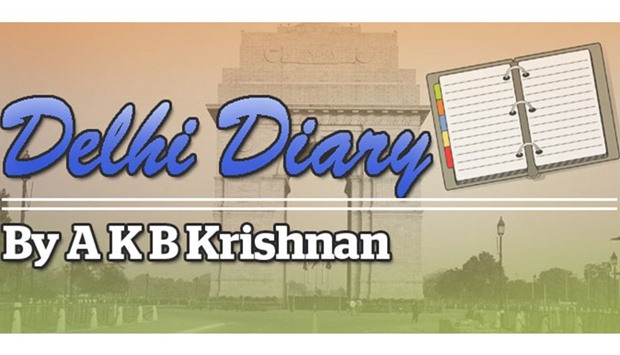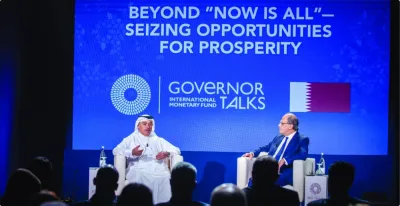Two by-elections last week, one to the Lok Sabha and the other to a state assembly, went along expected lines from the perspective of the eventual winners, but it is the losers who are having a hard time trying to decipher what hit them.
Gurdaspur in Punjab had been the pocket borough of Hindi film star Vinod Khanna of the Bharatiya Janata Party (BJP) who had won the Lok Sabha seat four times and with massive margins. Khanna’s death earlier this year had necessitated the by-election and the Congress Party’s Sunil Jakhar won it by a landslide.
The BJP and its ally Shiromani Akali Dal (SAD) and even the Aam Aadmi Party (AAP), the other chief protagonists in the three-way contest, would explain it away as the Congress Party’s use of “extra-constitutional” methods to ensure victory by putting all available government machinery to work to its advantage. But from a defeat of 135,000-plus votes to a victory of 193,000-plus votes would, by any reckoning, take something more than mere ‘government machinery.’
The mood in Punjab is very clear. It finds the BJP, with SAD as an ally, not worthy of government. This was amply evident in the state assembly elections in February this year when Captain Amarinder Singh led the Congress to a resounding victory, gaining as many as 31 seats compared to the previous elections five years ago. The Congress also improved its vote percentage substantially, making it amply evident that the BJP-SAD coalition, saddled with serious corruption charges, had run its course.
The AAP, although a new entrant, did creditably winning 20 seats to come second to become the principal opposition party. But Jakhar’s victory was so overwhelming that AAP candidate Suresh Khajuria lost his deposit. While Jakhar polled close to 500,000 votes, all that Khajuria got was a mere 23,579 votes. Despite his candidate’s defeat, AAP state unit chief Bhagwant Singh Mann found solace in the fact that Punjabis have once again rejected Prime Minister Narendra Modi’s policies by defeating the BJP candidate. That’s the state of politics in India at present.
The AAP and its leader Arvind Kejriwal must be really worried now. In the 2014 Lok Sabha elections, it had won four seats, the only state to return its candidate in all India. But soon two of its MPs fell out of favour with Kejriwal and several state leaders, including the unit president, were ejected because they did not toe Kejriwal’s line. But because the SAD-BJP rule under Parkash Singh Badal and his son Sukhbir Singh Badal was so immersed in self-aggrandisement, the voters had gravitated towards the Congress and the AAP.
But Kejriwal’s ambivalent statements about the Sutlej-Yamuna Link (SYL) canal had angered Punjabi farmers to no extent. And his continuing confrontation with the Modi government had not helped matters for citizens of Delhi, a sizeable number of who hail from Punjab. Obviously they wouldn’t want an encore in Punjab. This has led to the surreal defeat of Khajuria.
For the BJP, flying high after the success of Uttar Pradesh, a defeat in one constituency may not seem to be a measure of the present political sentiment in the country. But if the party were to dismiss it as such, it may be asking for serious trouble. By now it must have been amply clear for Prime Minister Modi and his party president Amit Shah that continuing with SAD as a partner could only bring more sadness. The BJP should be worried that it has lost more than 180,000 supporters in one single constituency. If the trend continues - and in this Chief Minister Amarinder Singh will have a big hand- the BJP can forget Punjab in 2019.
The second by-election was for the assembly seat of Vengara in Kerala’s Malappuram district where the Indian Union Muslim League (IUML) cantered to an easy victory. The seat had become vacant after incumbent MLA P K Kunhalikutty of the IUML resigned following his election to the Lok Sabha from Malappuram. The Congress Party must be happy in reflected glory because the IUML is part of the Congress-led United Democratic Front (UDF).
Being a Muslim-majority seat, both the UDF and the ruling Left Democratic Front (LDF) led by the Communist Party-Marxist (CPM) had fielded Muslim candidates. The LDF had thrown everything into the election but its candidate P P Basheer, despite being a ‘local’ as he hails from Vengara itself, could not match the Muslim League’s might. Fresh developments in the shenanigans of some of the senior UDF leaders in what has come to be known as ‘solar scam’ could only help reduce the margin of victory of its candidate K N A Khader.
Here again, the BJP has a lot to worry. The party had just about kept its head above water by winning a single seat in the 2016 assembly elections. It was supposed to be the breakthrough that Modi and Shah had wanted. Further inroads will ensue, they had maintained. But the BJP’s K Jayachandran polled a mere 5,728 votes. Even the fledgling Social Democratic Party of India (SDPI) did better with 8,648 votes to finish third.
It may still be early for the Congress Party to celebrate the BJP’s predicament. The real tests will come later this year in Gujarat and Himachal Pradesh. Anything short of convincing victories, especially in Gujarat, would put the Modi-Shah combine in tangible trouble. In a sense these two elections could well be the harbinger of what is in store in 2019.
Delhi Metro desperately needs fare hike
Air India is a bad story. Indian Railways is a bad one. And if some, especially Delhi Chief Minister Arvind Kejriwal, could help it, the Delhi Metro Rail Corporation (DMRC) could easily be joining that select group of businesses that government monopolises and slowly but steadily runs to ground.
The DMRC plied its first train in 2002. The minimum fare then was Rs4 and the maximum Rs8. The total length of the network was just 25km then. The fares stayed that way for 15 months before they were raised to Rs6 and Rs15. With the addition of more lines and more kilometres, the fares increased to Rs10 and Rs30. But that was in May 2009 after which the fares had not seen any increase.
Then in May this year the corporation’s Fare Fixation Committee came up with a blueprint to raise the fares periodically commensurate with the increase in running and maintenance costs. While the minimum stayed at Rs10, the maximum rose to Rs50. Earlier this month it was further raised to Rs60. But by now the total length of the lines had also increased to 330km with 241 stations. It will soon overtake the 150-year-old London Tube to be the third longest after Shanghai and Beijing.
Sadly, the increase in network did not mean an increase in revenue for DMRC. Whereas it had made a $4mn profit in 2007, it was in the red by as much as $73mn in 2016. The audited results show that input cost has increased by over 105% in energy, 139% in staff cost, and by 213% for repair and maintenance. In 2009-10 one unit of electricity cost Rs3.21, in 2016 it was Rs7.25.
All these statistics only go to prove one thing; that Delhi Metro could be another Air India if fares were not increased substantially. A Rs10 hike for the longest journey should not be too cumbersome even for daily wage earners who, by the way, may only be a miniscule percentage of metro riders. But Kejriwal and his ilk would have none of it. His government even staged a sit-in strike disrupting public life. Surely Kejriwal was looking to target the Modi government more than helping the ordinary citizen by opting for the “sop opera”. As Burke put it, “it is a general popular error to suppose the loudest complainers for the public to be the most anxious for its welfare.”

Delhi diary

